Welcome to Fookes Software’s support portal
How to convert OST to PDF (with attachments)
Please follow the steps below. For any setting that’s not specifically mentioned, you can either use the default (preset) value or consult the Aid4Mail user guide for details.
Step 1: Open Aid4Mail’s settings
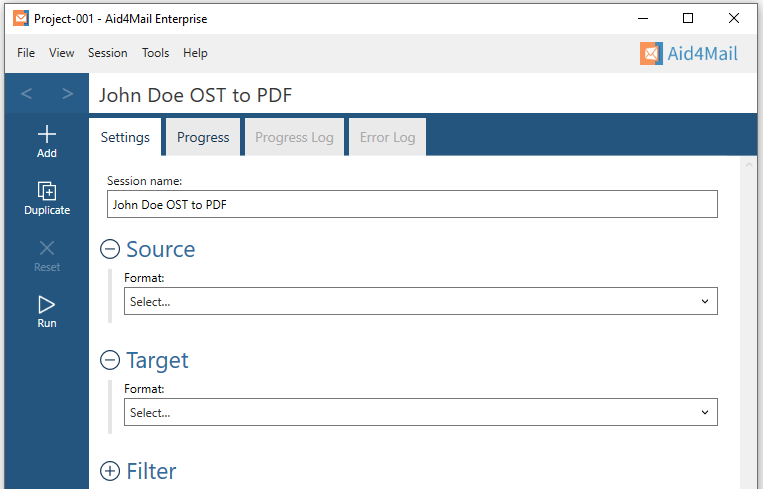
- In Aid4Mail, select the Settings tab.
- Update the Session name to so it describes for the task at hand. In this example, we will be converting John Doe’s OST file to PDF files so we’ve entered John Doe OST to PDF as the session name.
- Below the session name there are three sections: Source, Target and Filter. Each can be displayed or hidden by selecting the +/- symbol next to the section heading. This tutorial requires them all to be displayed.
Step 2: Set an OST file as your source
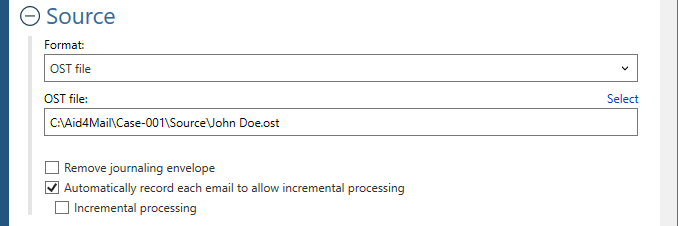
- In the Format list, select OST file.
- Set the location of your OST file, either writing it directly in the field or by using the Select button to browse your file system. By default, the Windows version of Microsoft Outlook stores OST files in this location:
C:\Users\<WINDOWS USERNAME>\AppData\Local\Microsoft\Outlook\
- Choose whether to Remove journaling envelope if your email files are journaled.
Step 3: Set PDF as your target
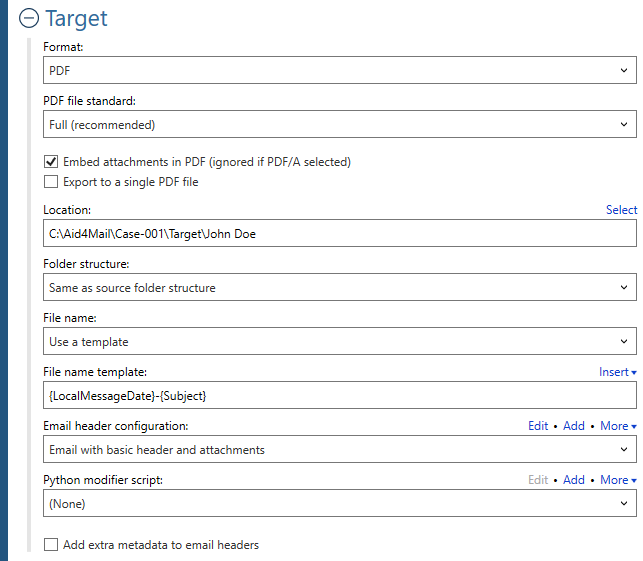
- In the Format list, select PDF.
- Select a PDF file standard.
- Choose whether to Embed attachments in the PDF, or save them to disk and insert links to them in the PDF. TIP: If you choose not to embed attachments, and later upload your file or send it to someone else, you’ll need to send the attachments too.
- Decide if you want to Export to a single file or create a new PDF file for every email in your OST file.
- Set the Location where you want your PDF file(s) to be saved. You can write it directly in the field or use the Select button to browse your file system. If you’re exporting to a single PDF file, set a file name (with extension), otherwise set a folder location.
- Select an option for the Folder structure of the exported files. (Only if you decided not to export to a single file.)
- Determine the criteria for each PDF File name. (Only if you decided not to export to a single file.)
- Set an Email header configuration. This determines how much data from the email header is included in the PDF and where it is placed. You can choose the default option or one of the presets from the list. You can also Add your own or Edit an existing one, using the pop-up editor, for full customization.
If you’re using a template for the folder structure or file name, you’ll need to set a Folder structure template and/or File name template.
Templates consist of a combination of text and tokens. The text must not include illegal file name characters. The tokens represent data from the email being processed. You can use the Insert button to help you find and include tokens.
Step 4: Set your filter

- Under Folder filtering, select Folder selection. Your OST file folder structure should appear in the box below.
- Select the folders you want Aid4Mail to process. The others will be skipped.
Step 5: Run your OST to PDF conversion
Select the Run button (Aid4Mail’s version of a convert button) or Session > Run from the menu. Aid4Mail will convert your chosen OST file to PDF files. It will automatically open the Progress tab so you can monitor what’s going on.
Step 6: See the results
The screenshots below show PDF file names created by Aid4Mail in our example, and one of the PDF documents. You can see the effect of the settings we chose:
- Each email in the OST file was converted to its own PDF file.
- The file name for each PDF file matches the template we set:
{LocalMessageDate}-{Subject}-{SenderAddress}
You can see that all file names include the local date, email subject, and sender’s address. - The email header in the PDF document matches the default configuration we set. It includes the email subject and the date.
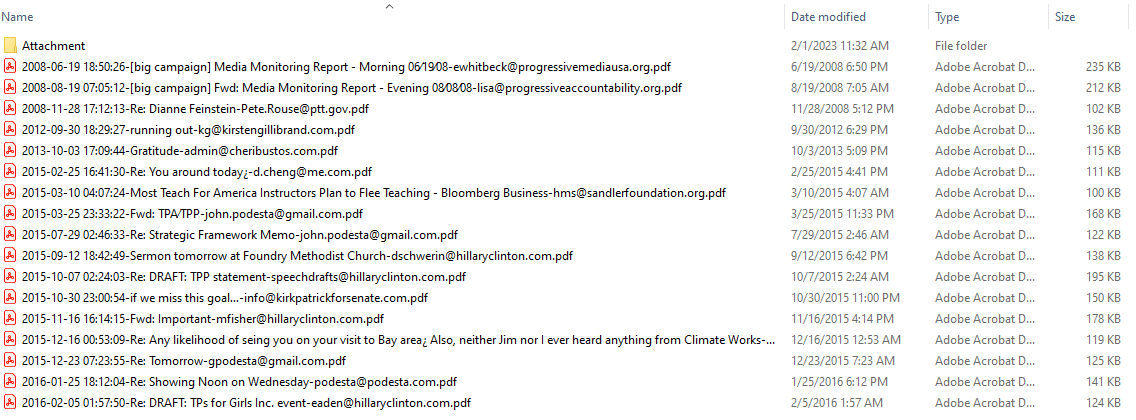
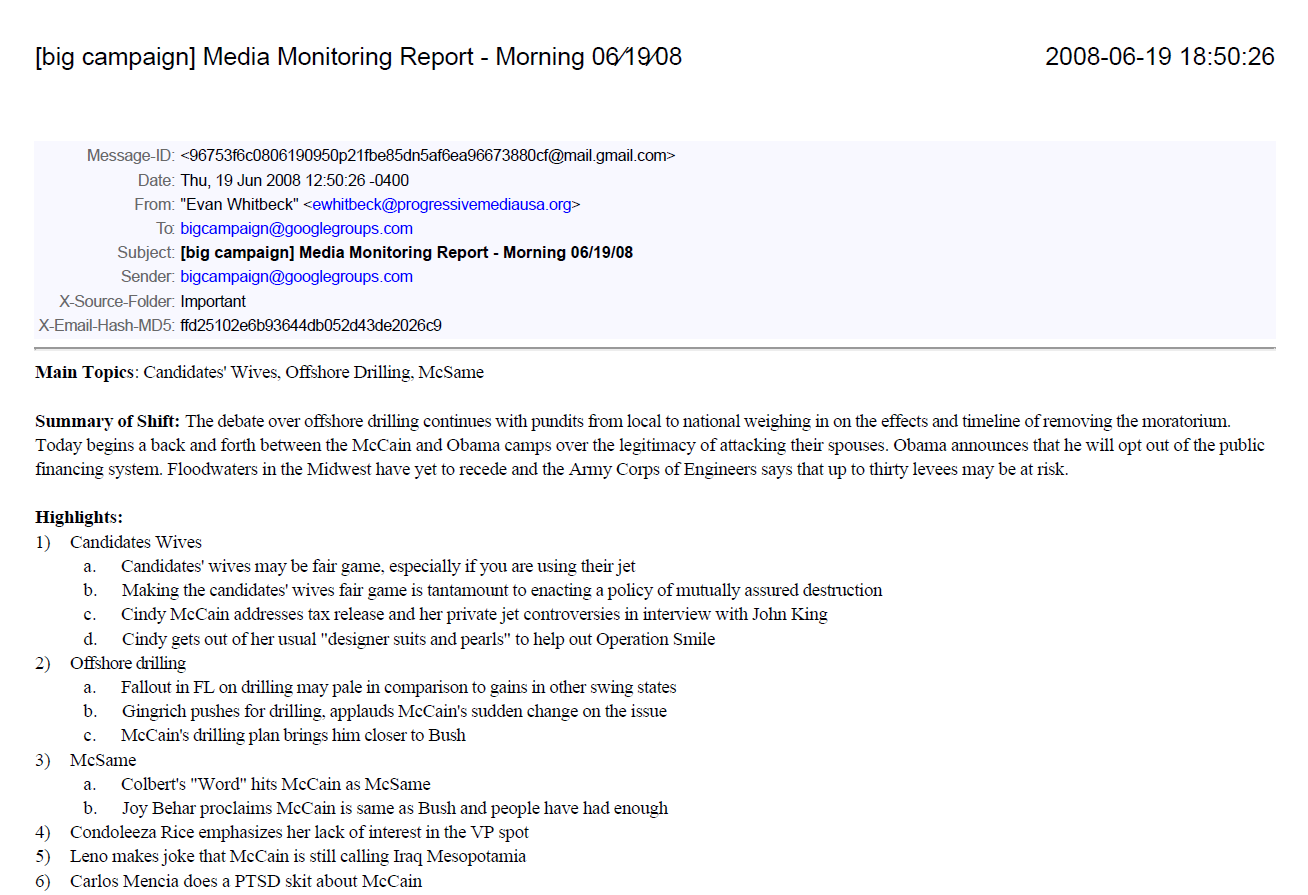
That’s it!
We hope you found this tutorial helpful in showing you why Aid4Mail is the best OST to PDF converter on the market. As shown above, Aid4Mail can export an OST file to PDF with ease and provide you with the ability to customize the content in the exported PDF files.
If you’re looking for further information, first take a look through the Aid4Mail user guide and our knowledge base articles.
If you still have questions, don’t hesitate to contact our award-winning Helpdesk.
If you’d like to buy an Aid4Mail license, please visit the online store.
Or if you’d like to try Aid4Mail first before purchasing, download a free trial and run your own tests converting OST to PDF. We want you to have full confidence in Aid4Mail!